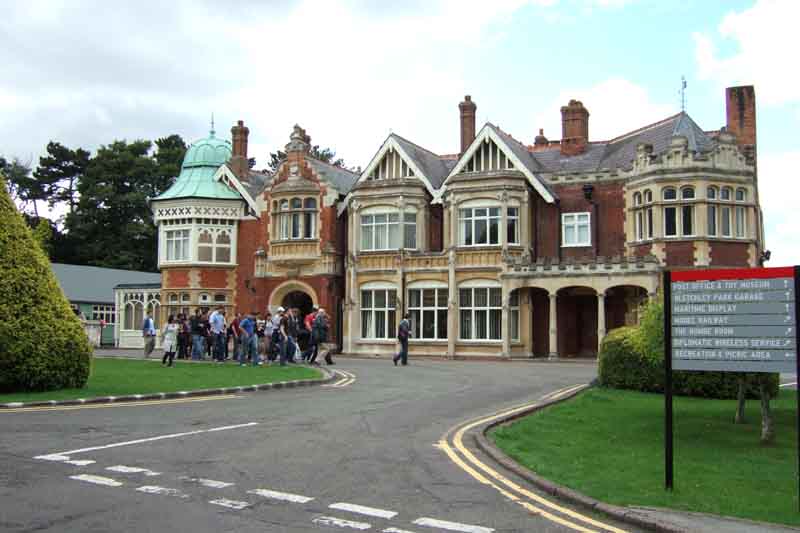The Mansion House

Captured Enigma coding/decoding machine, this is the 4-rotor Navy machine. Note that despite the implication in the 2000 film 'U-571' American personnel did not capture the first Naval Enigma, and didn't capture any Enigma material until 1944. It was only after an outcry in Britain that a caption was added before the end credits (shown in America, I wonder?) detailing that it was the Royal Navy that captured the first naval Enigma before America had even entered the war, and the vast majority of all Enigma material.

'Exploded' rotor, showing the complex wiring that translated between one letter and another

Reconstruction of a typical Y-station where the coded messages were intercepted and transferred to punched tape

One of the Bombe mock-ups used in the film 'Enigma'

Internals of the Bombe reconstruction. One Bombe consisted of effectively 36 Enigma machines testing each possible combination of rotors and plug-board settings, encoding a word they expected to see in a message (crib) and comparing that to coded messages received that day. Eventually there were about 200 Bombes, truly a 'brute force' method of breaking the codes.

Tunny and 'Heath Robinson', the first analytical attempt at breaking the much more complex Lorenz code. A code tape was compared to a 'crib' tape shifting the relative positions of the tapes by one position for each pass of the tape loop. It worked, but the mechanical problems of controlling the tapes severely limited its speed.

Colossus Mk2. Just one of four bays of racks containing about 2500 valves and hundreds of relay and other electro-mechanical equipment. Colossus only used one tape, the code tape, and the sprocket holes in that were used to generate clock pulses for the electronics, so the tape could be run much faster. This is the limiting factor of Colossus, apart from that the electronics and analysis are faster than many modern-day computers. Colossus was programmed by a set of switches and plug-boards, and works not by 'brute force' but by analysing sequences of letters in the coded message using complex algorithms and outputting suggested Enigma rotor and plug-board settings. These were then applied to the local version of Enigma that was used for producing plain text from the coded message tape.

Live-size sculpture of Alan Turing with an Enigma
